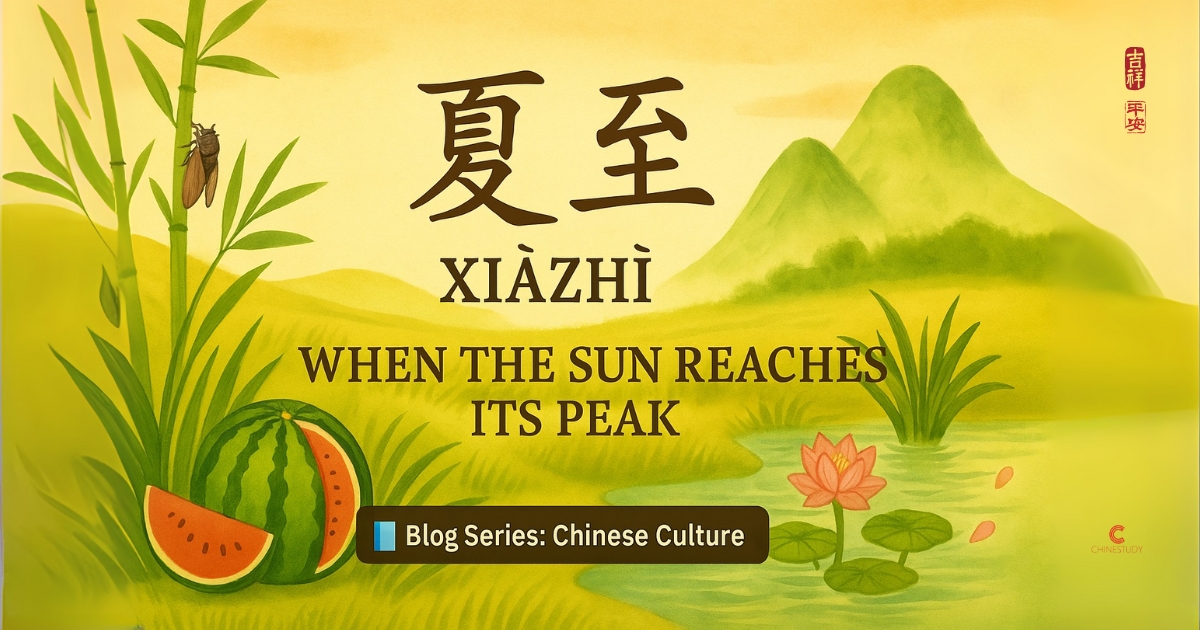☀️ 夏至 Xiàzhì – The Longest Day of Sunlight and Noodles

📅 When Is 夏至 (Xiàzhì)?
夏至 (Xiàzhì) is the 10th solar term in the Chinese calendar, usually falling on June 21 or 22.
It marks the longest day and shortest night of the year in the Northern Hemisphere.
至 (zhì) means “extreme” — the sun has reached its highest point.
🌱 What Does It Mean?
- 夏 (xià) means summer
- 至 (zhì) means to arrive, reach or extreme
So, 夏至 (Xiàzhì) means “summer has arrived” — the time when the sun reaches its highest point, bringing the longest day of the year.
🥢 How People Celebrate
In ancient China, 夏至 (Xiàzhì) was once a public holiday!
People would:
- Offer thanks to the Earth for summer harvests
- In the north, people eat noodles 🍜 (they’re light and easy to digest).
- In the south, they enjoy cooling foods like cucumber and mung bean soup. 🥒
- Avoid overexertion due to rising heat
🗣 Key Vocabulary & Expressions
- 夏至 (Xiàzhì) – Summer Solstice
- 白天最长 (báitiān zuì cháng) – the longest daytime
- 冷面 (lěng miàn) – cold noodles
- 节气 (jiéqì) – solar term
💬 Try This!
Translate and read aloud:
今天是夏至,白天最长。
(Jīntiān shì Xiàzhì, báitiān zuì cháng.)
→ Today is Xiàzhì, the longest day of the year.
🇨🇳 Cultural Insight
夏至 (Xiàzhì) isn’t just about the sun — it’s about balance and turning points.
Just as day slowly gives way to night after its peak, life too moves in cycles.
It reminds us to slow down, stay cool, and prepare for what’s next.
🌟 Final Thoughts
夏至 (Xiàzhì) teaches us:
☀️ Even the longest days will shift.
🧊 Cooling down is also a kind of wisdom.
🌱 Pause and observe the balance of light and dark.
🇨🇳 Curious about more Chinese traditions?
📚 Step into the blog series: Chinese Culture!
Thank you for subscribing!
Have a great day!